13+ Sample Schedule Management Plan
-

Schedule Management Plan Template
download now -
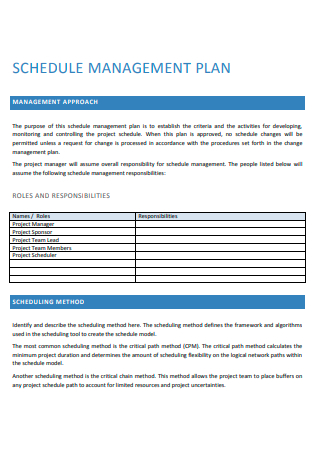
Basic Schedule Management Plan
download now -
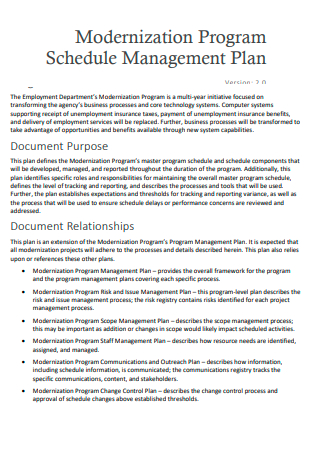
Modernization Program Schedule Management Plan
download now -
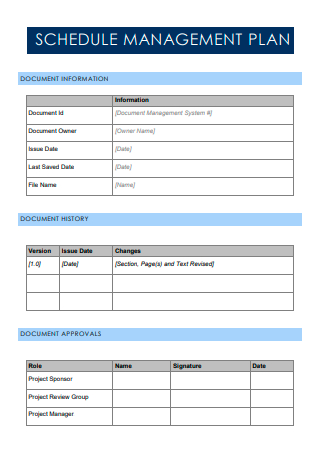
Formal Schedule Management Plan
download now -
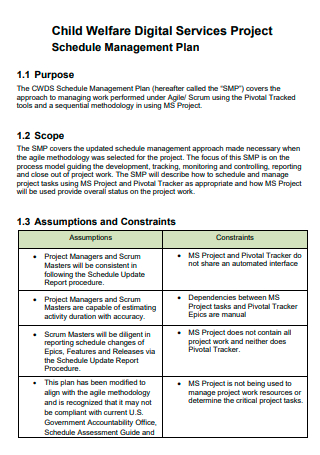
Child Welfare Digital Services Project Schedule Management Plan
download now -
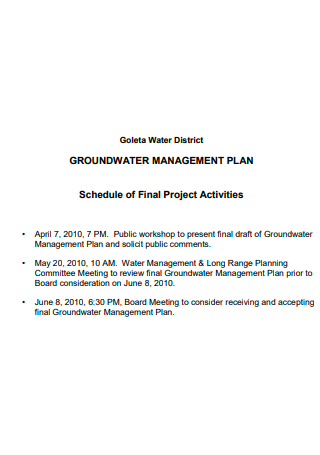
Final Project Schedule Ground Water Management Plan
download now -
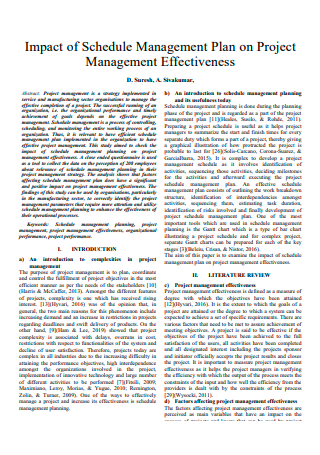
Standard Schedule Management Plan
download now -
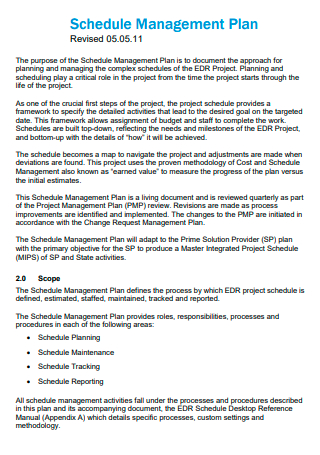
Schedule Management Plan Format
download now -
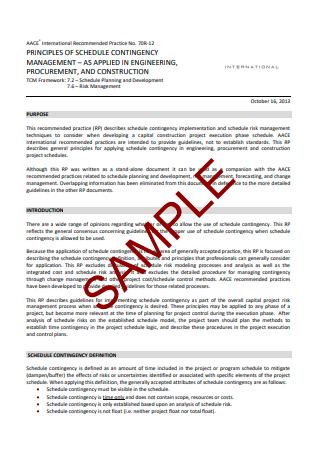
Sample Schedule Management Plan
download now -
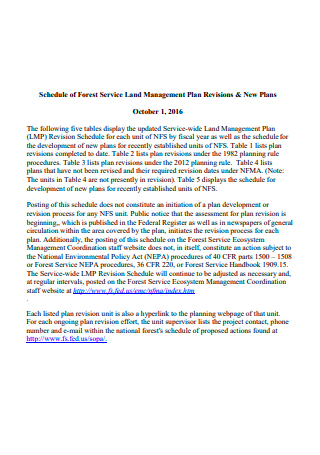
Schedule of Forest Service Land Management Plan
download now -
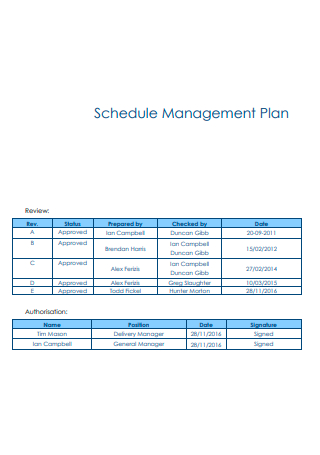
Schedule Management Plan Review
download now -
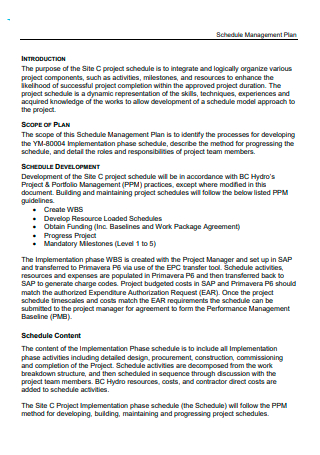
Simple Schedule Management Plan
download now -
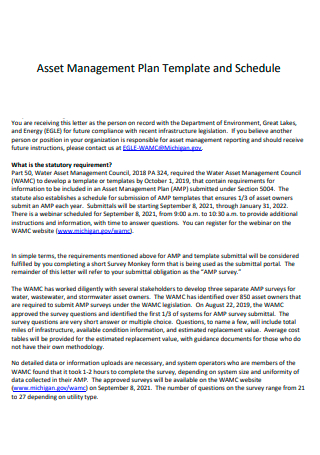
Schedule Asset Management Plan
download now -
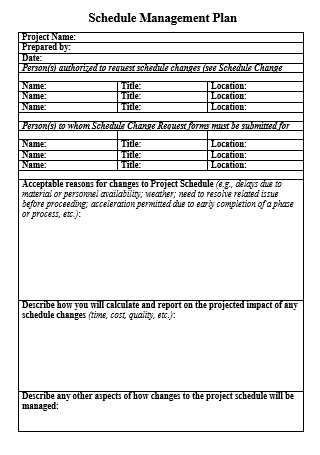
Schedule Management Plan in DOC
download now
FREE Schedule Management Plan s to Download
13+ Sample Schedule Management Plan
a Schedule Management Plan?
Benefits of Creating a Task Scheduler
Tips in Managing a Schedule Management Plan
How To Process Project Scheduling
FAQs
What constitutes an effective management plan?
How does a management organize his or her time?
How is my work schedule structured?
What Is a Schedule Management Plan?
A schedule management plan is a detailed breakdown of the project’s activities and tasks according to time constraints. It specifies the start and finishes dates for tasks and milestones that must be completed before the project can be considered complete. Developing a schedule management plan is a vital element of project planning that ensures projects are successfully started, monitored, controlled, and completed. Your goal should contain the time of each activity, the resources required, and the availability of assigned team members. These lay the groundwork for a strong foundation that will guide the project through its many stages to completion. Project managers can hone their schedule management planning skills by generating, utilizing, and updating project schedules in real-world projects. According to statistics, the average worker is productive for 60% or less of each day in all occupational categories. However, that percentage reduces dramatically for office workers.
Benefits of Creating a Task Scheduler
Even if you think your career is boring and repetitive, there are a variety of duties that require your attention throughout the day. But how will you be able to give each of these tasks the attention they deserve? Create a schedule for your most critical chores to help you move forward. Here are ten reasons why you should make a task schedule. Not only will this ensure that you complete all of your tasks, but it will also increase your productivity. You’ll also benefit from the following advantages.
Tips in Managing a Schedule Management Plan
Schedule management strategies vary according to project duration, scale, and organizational resources. However, these strategies should include specific measures to maximize their chances of success. A free slack allowance is an example of this. It guarantees that sufficient time is allocated to each work to avoid scenarios in which the following tasks — or the entire project — are delayed. It is prudent to incorporate team members and subject matter experts in the early stages of developing your project schedule management plan to identify activities and ensure it is as precise as feasible.
How To Process Project Scheduling
How do you build a schedule for a project? To be sure, the project schedule process may be broken down into seven easy parts. Adhere to these, and you’ll be a scheduling pro in no time.
-
1. Management of plans and schedules
Project communication strategy for informing the team of changes made throughout the project’s duration. How do you build a schedule for a project? To be sure, the project establishing the methods, company policies, and documentation guidelines that will govern your project lays the framework for a successful project schedule. The schedule management plan details the resources allocated to the project and any contingencies that may develop. Also, it includes a list of project stakeholders, those who must approve the schedule, and others who require a copy. Further, this document outlines who has the power to make schedule modifications, the procedure team members should follow when requesting a change, and a project communication strategy for informing the team of changes made throughout the project’s duration.
2. Define the activities of the project
This can be as manageable as compiling a list of tasks that must be done to complete your project successfully. When working on complicated projects, it may be beneficial to organize these activities using a chart displaying project tasks and their sub-tasks and to keep organized at work. One of the difficulties encountered during this project scheduling process is determining how to divide activities. Consider the 8/80 rule, which suggests that an endeavor should require between eight and eighty hours of labor. In team task management, jobs that take less than eight hours can be grouped, whereas tasks that take more than eight hours are likely too burdensome and should be further broken down. Additionally, activities should be quantifiable, easily calculated, and directly tied to a project outcome and a budgeted cost.
3. Establish dependencies
Once you’ve identified all of the project’s activities, carefully consider each one to see whether tasks are dependent on others to be accomplished. For example, if you’re constructing a house, the roof cannot be attached until the frame is complete. Establishing all project dependencies is critical to schedule your work effectively and avoid project delays. You may use the best project management software to address project task dependencies by interacting with stakeholders and brainstorming restrictions associated with dependencies.
4. Activities should be sequenced
You can sequence your activities after you’ve established dependencies between them. You haven’t assigned any time to your actions in terms of work hours or deadline dates at this point. Instead, you’re concentrating on the sequence in which all project activities should be completed to achieve the most efficient flow.
5. Calculate resources
Each action in your project requires resources in the form of staff, subcontractor fees, tools, and workspace. Consider additional materials that are industry- or project-specific. Calculate the resources required to complete each project activity. Remember that resource allocation affects your timetable; if a single team member is responsible for many project activities, they cannot be completed concurrently.
6. Calculate durations
This stage is very self-explanatory but critical. How much time will each project activity require? Naturally, underestimating your workload can cause you to fall behind schedule and ultimately disappoint your consumer. Overestimating could result in team members or other resources sitting idle while awaiting the completion of preceding tasks. The most accurate method of estimating length is to use data from comparable prior operations. If you lack data and there is no applicable industry standard, make an estimation based on the average of the finest, worst, and most likely scenarios.
7. Create a project schedule
At this point, you should have accumulated all of the information necessary to create a project schedule. You can set beginning and due dates for each activity based on their duration and resource requirements, as well as their dependencies and proper order. Numerous methods and formulas exist for creating the project schedule, including critical path, critical chain, and resource-leveling. Each of those strategies is deserving of its post. Therefore we will skip over them here. Take the time to discover a technique that works for you.
FAQs
What constitutes an effective management plan?
A proper management strategy assists you in achieving your objectives in a variety of ways: It defines the tasks and responsibilities of each individual in the organization, ensuring that everyone understands what she and everyone else is expected to do. Staff members know who to contact for information, consultation, and monitoring, among other things.
How does a management organize his or her time?
Assigning tasks, arranging tasks into departments, distributing power, and allocating resources across the organization are all part of the organizing process. Managers organize personnel, resources, rules, and procedures during the organizing process to help achieve the plan’s objectives.
How is my work schedule structured?
A work schedule is a general term that refers to the days of the week and hours per day that a worker is scheduled to work. There are numerous work schedules, each unique to the organization and position. Your plan may also vary according to the season.
These schedule management plans, we feel, must add value to the project manager. If your schedule is not very complicated, you may not need to construct a Schedule Management Plan. On the other hand, the project manager should develop a plan to add value to large and complex projects.
